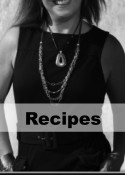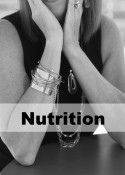Wellness Tips, Healthy Recipes, Inspirations, Lifestyle, Nutrition + More
Handy Healthy Portion Guide
Maintaining a healthy diet is a balancing act. You need to consider both what you’re eating and how much. This is key to your weekly meal prep day. Start by rethinking the way you fill your plate: use a smaller plate when you dish up meals; include the right proportions; and dish up vegetables and fruits before you get to other foods.
This simple guide that uses your hand serves can be helpful as a general guideline for healthy eating but should be adapted and customized according to what works best for you.

Fruits
Eat in season, choose local and organic when possible, and eat a variety of colors. Enjoy fruit when craving sweets and snacks. In fact, add a few walnuts, almonds or almond butter to your fruit and the protein and fat will slow down the fructose absorption and keep you satisfied longer.
Vegetables
Vegetables are nutritionally rich – so fill your plate (at least 50%)! Go for many colors, choosing dark leafy greens as a base as much as possible. Go for local and organic whenever possible.
Whole Grains
Whole grains provide many nutrients and fiber. Avoid refined grains like white bread, white rice, and white flour products. Note: breakfast cereals “made with whole grains,” really do not not contain whole grains. A grain is whole if you can see the whole, unadulterated grain.
Protein
Choose healthy varieties such as beans, nuts, eggs, fish, and poultry. Choose organic and cage-free whenever possible. If you eat meat, choose a lean meat and if possible grass-fed and/or organic for best quality. Avoid processed meats like bacon and cold cuts.
Fats and Oils
Use plant-based oils like olive oil for cooking and as dressing on salad. Choose wild fish, avocados, nuts, and seeds (these could also be part of your protein as well). Balance your intake of animal-based saturated fats like butter, cream, and cheese. Avoid trans fats.








